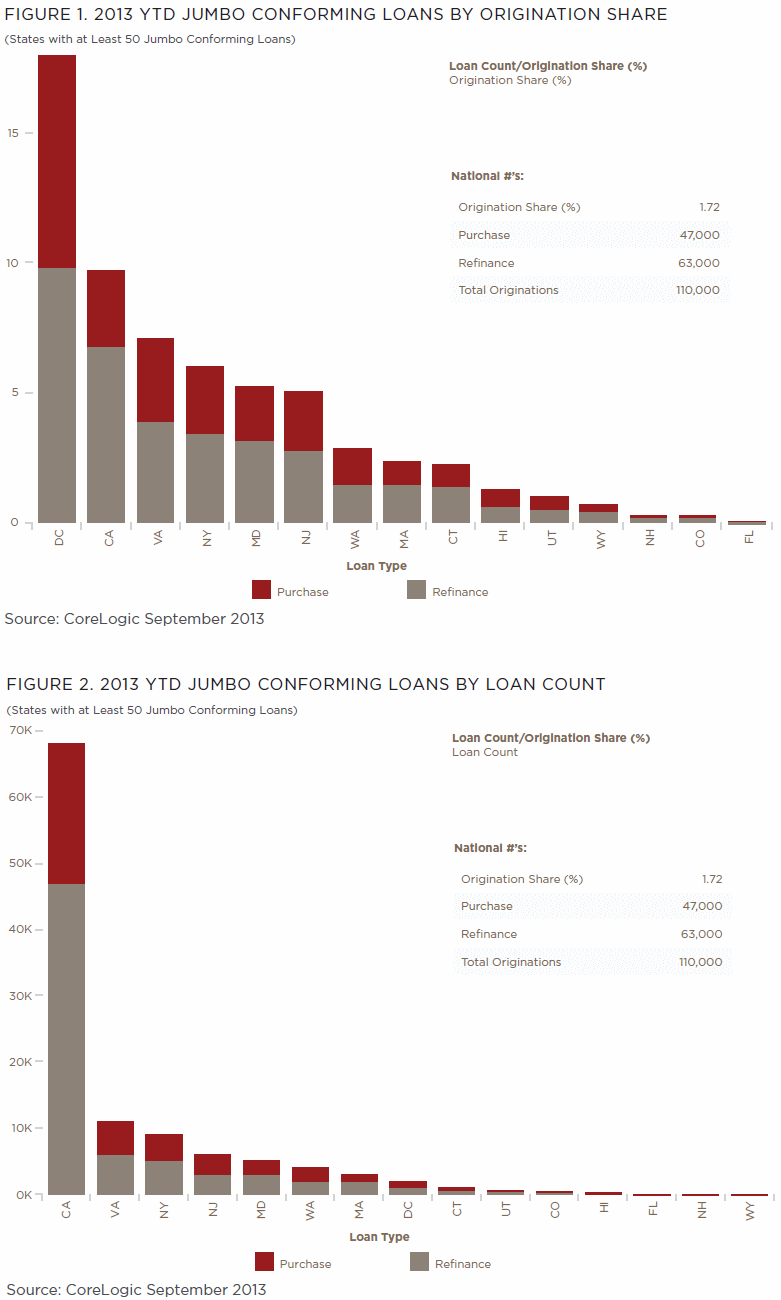In the November edition of CoreLogic's e-magazine MarketPulse, Kathryn Dobbyn looks at the potential impact of lower conforming loan limits on the mortgage market. These limits, which set maximum amounts for conforming loans purchased or guaranteed by Freddie Mac and Fannie Mae (the GSEs) and are generally followed for loans guaranteed by FHA and the VA, were raised temporarily to a maximum of $729,000 in certain "high cost" areas by the American Recovery and Reinvestment Act (ARRA) in 2009. When that act expired in late 2011 and after much debate the limits rolled back to a maximum of $626,500 in high cost areas and $417,000 in the rest of the country, limits established by the Housing and Economic Recovery Act of 2008 (HERA). The limits are updated annually based on median home prices at the county level.
The updates to loan limits are usually published in November and this year the debate has heightened as the Edward J. DeMarco, acting director of the Federal Housing Finance Agency, regulator and conservator of the GSEs, has announced he intends to lower the limits and had met considerable blowback from housing industry groups. Dobbyn looks at the prevalence of the jumbo conforming mortgages - those falling between $417,000 and $625,500 - to see what might be the impact of eliminating this category in areas of the country where it currently exists.
First, she found that only 110,000 of these mortgages have been originated nationwide this year - 1.72 percent of all mortgage originations. Loans used for home purchases totaled 47,000 and there were 63,000 refinances. Looking only at the 15 states where 50 or more such originations occurred she found only a few where they were widely used. By percent of originations the District of Columbia had the highest incidence at 18 percent although that translates to just over 2,000 loans. Sixty percent of all jumbo conforming mortgages in the U.S., 68,000 loans, were originated in California but they constituted less than 10 percent of California's total mortgage lending.

Taken together, the District, Maryland, and Virginia have also benefited from the HERA limits with a total of around 20,000 conforming jumbo originations, principally in the Washington and Baltimore metro areas. The New York, New Jersey areas also together had 15,000 of the loans.
Dobbyn says it has been an interesting two years since ARRA expired and the mortgage market is confronting many unknowns, particularly in the regulatory area. "As the debate regarding changes to the conforming loan limits is bound to continue to some time," she says, "it is helpful to note that at least for the high-cost areas the impact of the current limits has thus far been minimal, yet highly targeted."







